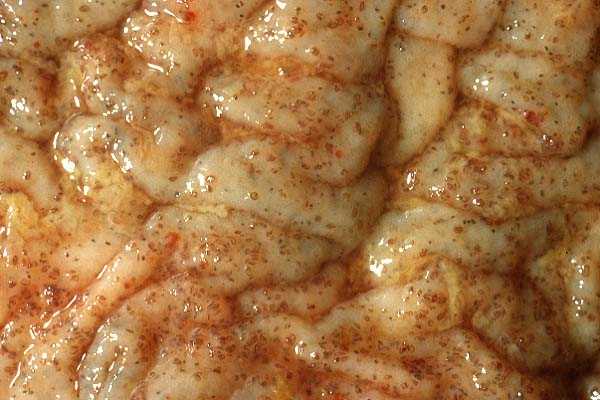What is Cyathostominosis:
Cyathostominosis is a serious condition in horses that occurs when large numbers of encysted larvae of the small redworm (cyathostominae) suddenly emerge from the intestinal wall. This mass emergence triggers a severe inflammatory reaction in the large intestine, potentially leading to life-threatening symptoms.
How does cyathostominosis develop?
Small redworms are the most common worm species in horses. Part of their life cycle takes place inside the intestinal wall:
When this happens, the intestinal wall becomes severely inflamed in a short period of time. This is cyathostominosis.
Symptoms of cyathostominosis:
The associated symptoms are often acute and severe:
Can cyathostominosis be detected via a fecal test?
No – encysted larvae cannot be seen in a fecal test.
A fecal test may therefore be negative even when the horse carries many encysted larvae.
A positive fecal test reflects active egg-shedding worms, not the number of encysted larvae.
This is why a proper annual plan, including record-keeping and seasonal advice, is so important.
Treatment:
Cyathostominosis is a condition that always requires veterinary involvement. Treatment often includes:
Can cyathostominosis be prevented?
Complete prevention is not possible, but you can greatly reduce the risk by:
What is a worm aneurysm
A worm aneurysm is a weakened or dilated area in an artery that develops when the migrating larvae of the large redworm damage the blood vessel wall.
How does it develop
The larvae migrate through the arteries surrounding the intestines. During this migration they cause inflammation of the blood vessel, blood clots and weakening or dilation of the vessel wall which results in a worm aneurysm.
Why is it dangerous
A worm aneurysm can block the blood supply to the intestines, cause severe colic and in some cases become life threatening.
Important to know
A worm aneurysm is caused only by large redworms. Small redworms do not cause this condition.
With frequent fecal testing you maintain good control over your worm management and minimize the risk of worm aneurysm and cyathostominosis.

